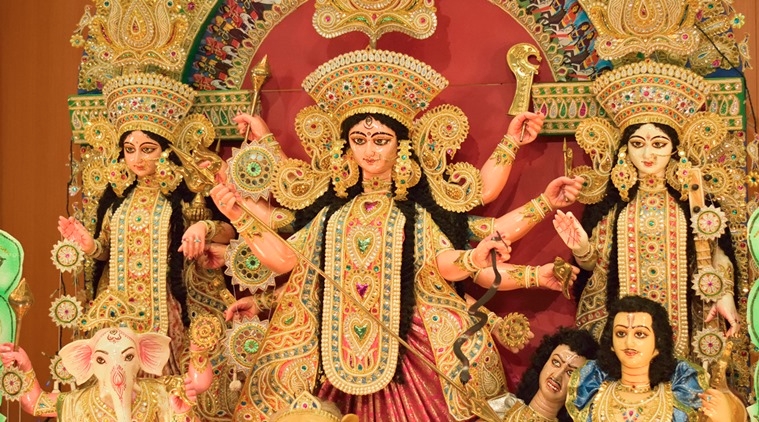Navratri 2017: Who are the three devis you worship during Navratri and why?
Navaratri is the celebration of the journey from divisions to oneness, duality to non-duality, bondage to freedom and ignorance to knowledge.
 The three Devis worshipped during Navratri are Durga, Laxmi and Saraswati. (Source: File photo)
The three Devis worshipped during Navratri are Durga, Laxmi and Saraswati. (Source: File photo)
Navratri is a nine day festival celebrated all over India. While in the north Ramlila happens, the festival is celebrated as Garba in the west, Durga Puja in the east and Golu in the south.
For three days each, we worship the Devis Durga, Laxmi and Saraswati. The 10th day is Vijayadashami – a day that marks Rama’s victory over Ravana in some regions, while in others it is the day of musical processions that end with immersing of the statues of Devis in water, thus bringing to an end a seeker’s journey.
Durga kills Mahishasura; Mahisha means a buffalo – an animal symbolic of Tamas or Tamo Guna. Just like how a buffalo lazily lies in water and is a thick-skinned animal, Tamas makes us ignorant, lazy and lethargic. Tamas does not allow us to know that we are bound. In fact, it deceives us in believing that we are free. Hence, for the first three days we pray to Durga to kill the Tamas in us. We pray to the durgat harini to destroy our durgati, which in this case is our bondage and our ignorance of it. While we pray to Durga, the ringing temple bells wake us up from the slumber of ignorance and make us aware of our true potential.
Once we are woken up, we then worship Laxmi over the next three days. Laxmi, helps us focus on our goal or our lakshya. Ambition and single pointed determination to achieve our goals through dynamic action is Rajasic or Rajo Guna. Over the next three days we pray for prosperity that comes not just from material wealth but from the wealth of contentment, the wealth of devotion and the wealth of self-control. With these values in mind, we pray for our goals as well the goal – that I must know the truth.
Finally, when our mind is purified and made single pointed, we worship Saraswati, a deity symbolic of Brahmavidya or Self-knowledge. Clad in white clothes, she symbolises purity of mind. Her vehicle is the Swan or Hamsa, a bird with a supreme ability to differentiate between the real and the unreal. Through Sattva Guna we can contemplate and meditate steadily on the supreme self, to realise – ‘I am That’– Aham Saha (Hamsa) as it goes in Sanskrit. I am pure infinite consciousness and bliss, not this body or the individual ego.
So over these nine days as one worships the Devis, one moves from Tamas (ignorance, laziness, lethargy) to Rajas (passion, dynamism) and to Sattva (balance, harmony, purity). Ultimately, the 10th day arrives when the ego is destroyed and ‘I am still there’. I have transcended the three gunas and have gone beyond the realm of maya or duality. This conscious realisation of absolute oneness is Vijayadashami. Its our victory over the ego and all forms of divisions. We realise Rama in our heart because Ram means the one who revels everywhere, in the heart of each and every one. The joy of this vision of oneness is celebrated on the day of Vijayadashami. Thus, Navaratri is the celebration of the journey from divisions to oneness, duality to non-duality, bondage to freedom and ignorance to knowledge.
Photos





- 01
- 02
- 03
- 04
- 05

























